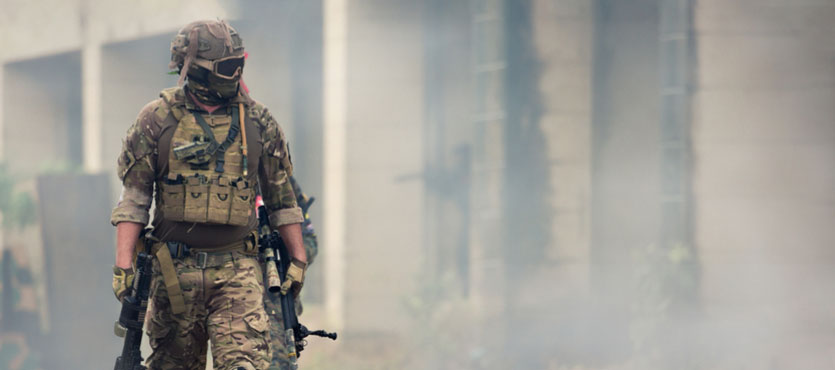In a Tet Offensive-style attack, Taliban fighters killed about 30 soldiers and captured a major military installation during a post-Eid ceasefire attack.
After a three-day truce, Provincial governor Abdul Ghafoor Malikzai said the Taliban attacked two installations shortly after dawn. The heavy fighting also killed four government soldiers elsewhere in the province and at least 15 Taliban fighters. In the primary attack, “Large numbers of Taliban came from several directions,” according to officials.
Some observers criticized Governor Malikzai for agreeing to the cease-fire and extending it an additional week. One Western diplomat said the consequences of that agreement could have been “disastrous,” but British Lt.Gen. Richard Cripwell dismissed that suggestion. “Candidly, the Taliban that came into Kabul on Saturday seemed to be more focused on taking selfies, going to the barber, buying ice cream and things like that,” he said.
Cease Fires and Sudden Offensives
In the mid-1960s, a growing number of Americans were expressing frustration about the situation in Vietnam. In their opinion, the increasing U.S. military commitment showed little signs of success. Whether or not the facts supported these opinions, the ill-feelings were most certainly real. In November 1967, U.S. General William Westmoreland insisted that there was light at the end of the tunnel. “I am absolutely certain that whereas in 1965 the enemy was winning, today he is certainly losing,” Westmoreland proclaimed.
Less than three months later, the “losing” enemy launched the devastating Tet Offensive. Tet is the Vietnamese Lunar New Year celebration, and by custom, both sides observed a truce during this important holiday. In the January 1968 Tet Offensive, the North Vietnamese Army and Viet Cong launched aggressive attacks throughout South Vietnam and effectively cut the country in half. American forces quickly rolled back these gains, but the damage had already been done from a psychological perspective. Millions of Americans assumed that Westmoreland had either been dishonest or had no idea what the situation was really like.
Similarly, Eid al-Fitr is a very important Islamic holiday. It marks the end of Ramadan, a holy month that includes dawn-to-dusk fasting. The Taliban did not technically violate the ceasefire. However, there is some evidence that the Taliban may have reconnoitered for the attack during the Eid al-Fitr truce. It is definitely true that the Taliban came out swinging while Afghan government forces were still sauntering back to their foxholes.
The political contexts in 2018 Afghanistan and 1968 Vietnam are also rather similar. With regard to Afghanistan, many Americans are frustrated at the seeming lack of progress. It appears the Taliban is still a force to be reckoned with almost 17 years after the U.S.-led invasion of October 2001. By almost any definition, that is a long time.
Contractors in Afghanistan
Flare-ups like the one described above may bring additional contractors to the country. Already, the number of private contractors is higher than the number of regular service members. That statistic underscores an important function of contractors in Afghanistan and elsewhere.
Since their numbers do not count in the official troop tallies, and their casualties do not count in the official statistics, contractors make the American footprint appear smaller. That is something everyone likes. The folks at home see a smaller deployed force and often equate that fact with a coming victory. Constituents overseas see their government doing more and the American imperialists doing less.
Though they may have a low profile, contractors face various dangers. That is especially true in anti-insurgency campaigns, where there are no “front lines” and “rear areas.” Some of these hazards include:
- Ambushes: Private military contractors often escort supply convoys and perform other similar tasks. A supply convoy may be a more tempting target than an armored column. The Hajis may assume that the supply convoy will be easier to hit.
- Suicide Attacks: It takes no military skill to walk to a certain place and push a button. Unfortunately for American private military contractors, there are plenty of people who are willing to go to crowded places and do just that.
- Combat-Related Occupational Diseases: Conditions like Post Traumatic Stress Disorder and breathing problems due to toxic exposure from burn pits occur over time. Since contractors spend lots of time in “rear areas,” this risk is especially acute.
Once the combat contractors leave, non-combat contractors often replace them. These individuals build the infrastructure, which entices refugees to return home. Although the bullets may have stopped flying, Afghanistan will still be a dangerous place. Construction work is quite hazardous, especially in places that have minimal government safety oversight.
How to Get Maximum Compensation
All Defense Base Act claims for any of the aforementioned injuries, and others like them, start with written notice. In a trauma injury case, it is easy to go back to the date of injury. This calculation is a little more complicated when the victim has an occupational disease. So, it is best to start working with an attorney straightaway.
After a few weeks or months, depending on the caseload, there may be a formal settlement conference between the victim and the DBA insurance company, but only if both parties wish to reach a settlement. In that case, a mediator tries to facilitate a settlement between the two sides. These conferences are often successful, but if not, your attorney will prepare your case for a Formal Hearing (a trial) before an Administrative Law Judge. Just like the courtroom scenes on TV, the victim’s attorney may cross-examine witnesses, present evidence, and make legal arguments. The big differences are that there are no cameras present, the lawyers are not paid actors working from scripts, there are no commercial breaks, and there is no jury.
In the unlikely event that that ALJ’s decision is completely unfavorable, that decision may be appealable in federal court.
For more information about available DBA benefits, contact Barnett, Lerner, Karsen & Frankel, P.A.

